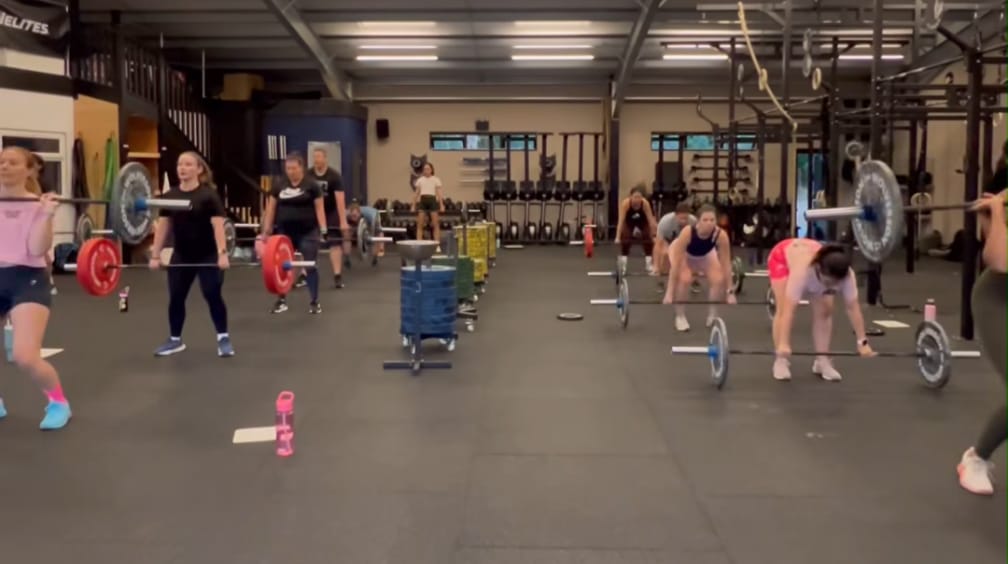

Think of a benchmark workout like a health check you can’t fake.
When you go for a health check at your GP, the results are plain: your blood pressure is up, your cholesterol is high, your resting heart rate tells its story. There’s no way to talk your way out of those numbers.
Benchmark workouts in CrossFit are the same. They don’t care how you feel you’re doing, they show you how you’re actually doing. They’re not about luck. They’re not about opinion. They are measurable, repeatable, and brutally honest.
This month at Beyond Walls, we repeated one of the classics: “DT”.
5 rounds for time of:
It’s a workout that looks straightforward on paper. But anyone who’s taken it on knows it’s a full test of strength, power, conditioning, and mindset.
DT doesn’t just challenge your body —it diagnoses your fitness.
Most online and commercial fitness programmes are built on vague promises. Run a bit. Sweat a bit. Hope you feel better.
CrossFit does something different. It uses benchmarks as fitness markers — workouts deliberately repeated across time so you can measure progress in black and white.
Benchmarks matter because:
They don’t lie, they don’t flatter, they don’t let you off easy.
The Science of Why It Works
High-intensity Interval training (HIIT), the backbone of CrossFit, has been studied extensively. The research is clear:
That’s not marketing. That’s peer-reviewed science. DT isn’t just making you sweat; it’s shaping your long-term health.
But benchmark workouts test more than your physiology. They challenge your psychology.
When you’re midway through DT, lungs on fire, grip failing, and barbell staring back at you — that’s when the mental work begins.
Do you quit early? Or do you push through, steady your breathing, and keep going?
Each time you choose the latter, you build resilience. That resilience doesn’t vanish when you leave the gym — it transfers to your life. Stress at work. Family challenges. Uncertainty in the world. You learn you can push through hardship because you’ve rehearsed it, under the bar, again and again.
Mental health benefits include:
CrossFit builds bodies, but it also builds minds.
What’s the end game? It’s not about having the fastest DT time. It’s about what that time represents.
In a world drowning in preventable chronic disease, fitness isn’t optional. It’s the most reliable defence you have.
Repeating DT here wasn’t just about seeing who’s the fastest. It was about measuring our community’s growth.
These are victories worth celebrating.
Benchmark workouts like DT aren’t simply tests. They’re truth in motion. They show you where you are, how far you’ve come, and what you need next.
We live in a world where healthcare often means “sickness management.” Waiting until something breaks, then trying to patch it back together.
CrossFit flips that model. It’s not treatment — it’s prevention. It’s building health before you need saving.
No pill, no fad, no shortcut will give you what training DT gives you:
That’s why we repeat benchmarks. That’s why we measure. That’s why Beyond Walls does what it does.
Benchmark workouts aren’t just fitness— they are your cure.